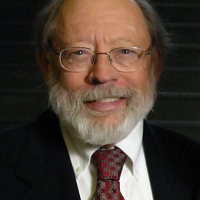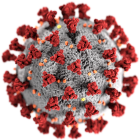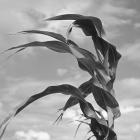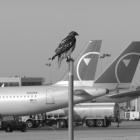Epidemics and ecology
Epidemics typically begin where human relations with animals go awry. Some estimates put the animal-human relationship at the core 75% of the time. Therefore, in the case of COVID-19 we should look beyond our cities, factories, and hospitals to where most animals live—in wild forests, grasslands, marshes, and river valleys, or (much more likely these days) on farms large and small, including confined animal facilities called feedlots. Radical changes in the ecology of either wild or rural environments can make animals sick, and it is sick animals that make people sick, though we may never touch or see them. Sick animals are not an enemy—they are victims much as we are, scapegoats no less. That is why killing all bats, sinister-looking little creatures that get blamed in so many cases, would neither be fair to bats nor make us healthier; it might even make things worse by adding to ecosystem turmoil.
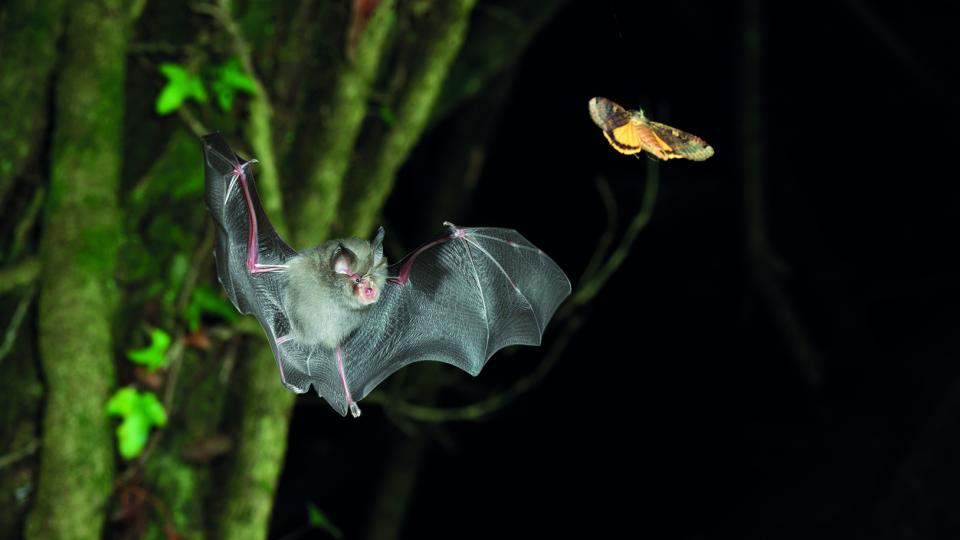
Horseshoe bat chasing a moth. Photograph by Frank Greenaway, n.d.
Horseshoe bat chasing a moth. Photograph by Frank Greenaway, n.d.
Accessed via Galway Community Heritage on 14 April 2020.
Click here to view source.
 This work is licensed under a Creative Commons Attribution-ShareAlike 4.0 International License.
This work is licensed under a Creative Commons Attribution-ShareAlike 4.0 International License.
A growing number of biologists who study disease outbreaks are finding that epidemics often follow a disturbance in ecological relations, and they point to humans as the main disturbing force.1 We are making animals sick by altering their habitats and disorganizing their lives. This happens when people turn a wild ecosystem into a more simplified agricultural regime, a deed our species has been repeating for ten thousand years or more, but are doing more aggressively than ever before because there are so many more of us needing food. Complex checks and balances get disrupted. Local diversity gets suppressed or lost. Viruses multiply, spread, and kill.
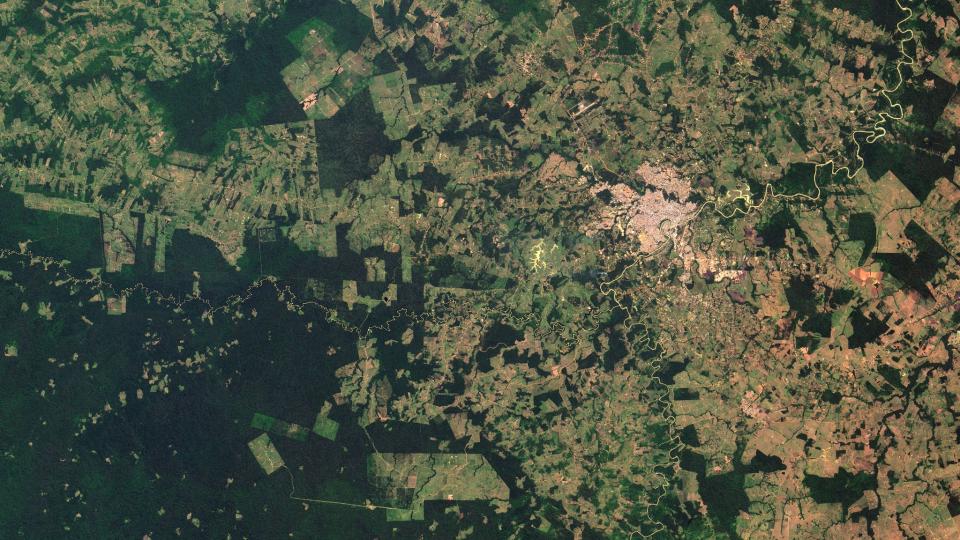
Deforested areas around Rio Branco, Brazil. Most of the light-green areas are pastures for cattle. Photograph from the CBERS-4 satellite, 2018.
Deforested areas around Rio Branco, Brazil. Most of the light-green areas are pastures for cattle. Photograph from the CBERS-4 satellite, 2018.
Courtesy of Coordenação-Geral de Observação da Terra/INPE.
Accessed via Flickr on 14 April 2020.
Click here to view source.
 This work is licensed under a Creative Commons Attribution-ShareAlike 2.0 Generic License.
This work is licensed under a Creative Commons Attribution-ShareAlike 2.0 Generic License.
This process of ecological simplification began long before plant or animal domestication occurred on earth. Hunters and gatherers now and then unbalanced nature by killing off too many species or severely diminishing their prey through overhunting, making it harder for them to reproduce or feed themselves. Consequently, they became more susceptible to bacterial and viral infections. Microorganisms in the environment, which hitherto had been relatively harmless, began to throw off new mutants that earlier would have died but now exploded in numbers, like bees buzzing around a sweet-smelling bed of flowers.
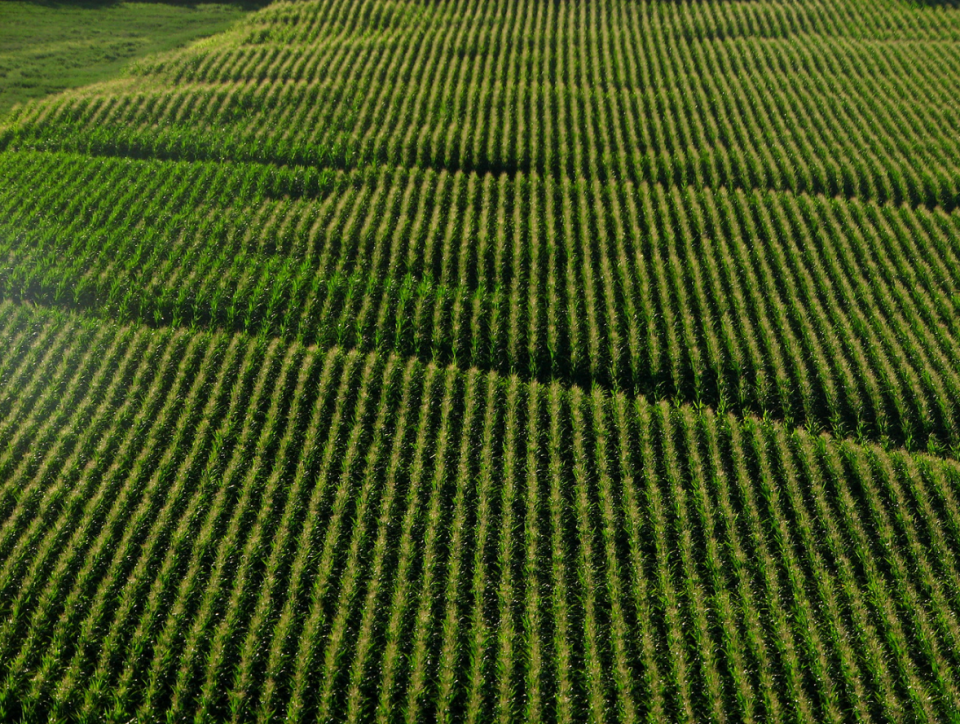
Aerial photograph of a cornfield. Photograph by Sarah H, 2007.
Aerial photograph of a cornfield. Photograph by Sarah H, 2007.
Accessed via Flickr on 15 April 2020.
Click here to view source.
 This work is licensed under a Creative Commons Attribution-NonCommercial-NoDerivs 2.0 Generic License.
This work is licensed under a Creative Commons Attribution-NonCommercial-NoDerivs 2.0 Generic License.
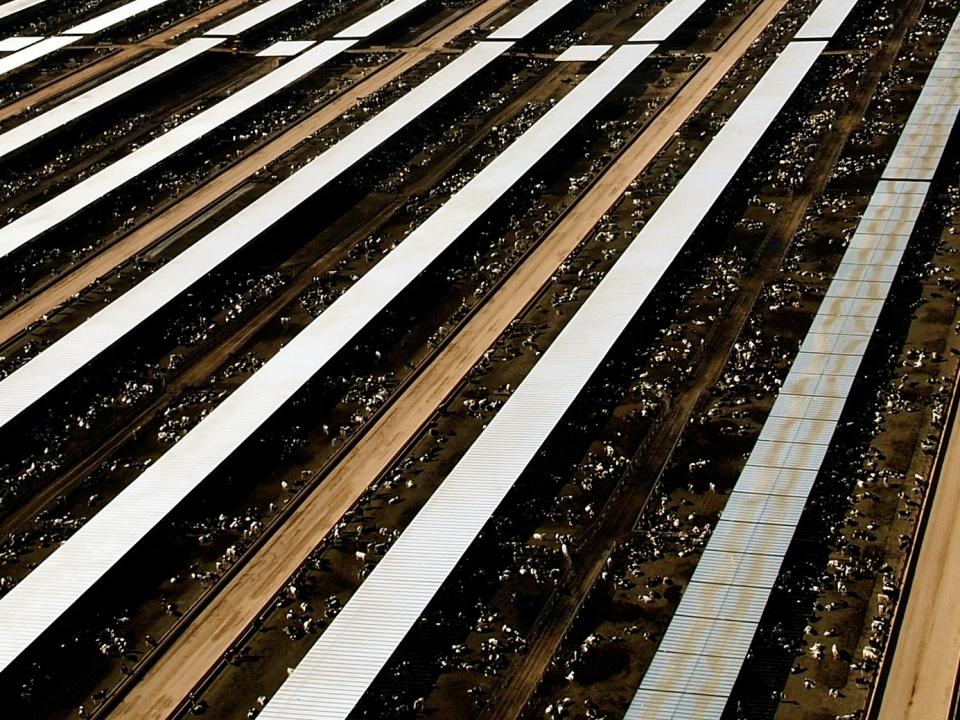
Aerial photograph of a cattle feedlot. Photograph by Wongaboo, 2010.
Aerial photograph of a cattle feedlot. Photograph by Wongaboo, 2010.
Accessed via Flickr on 14 April 2020.
Click here to view source.
 This work is licensed under a Creative Commons Attribution 2.0 Generic License.
This work is licensed under a Creative Commons Attribution 2.0 Generic License.
A virus reproduces by attaching itself to a host cell and injecting its DNA. This stresses the host. A host animal that is already overwhelmed by changes going on in its habitat is more vulnerable to strange new parasites that proliferate and attack its vital functions. It sickens and dies. As individuals die, an entire species may disappear and a stable ecosystem fall apart. Nature becomes rampant with aggressive organisms that meet little resistance.
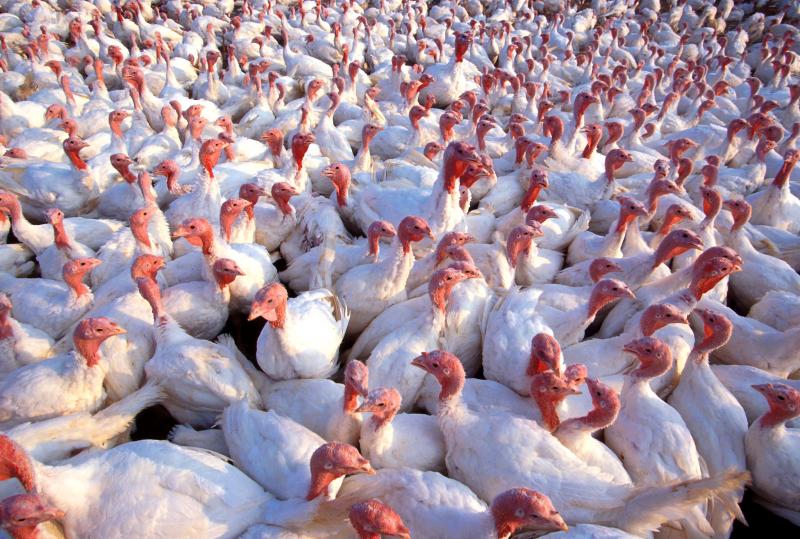
Turkeys being raised on a turkey farm. Photograph by Scott Bauer, 2013.
Turkeys being raised on a turkey farm. Photograph by Scott Bauer, 2013.
Courtesy of U.S. Department of Agriculture.
Click here to view source.
 This work is licensed under a Creative Commons Attribution 2.0 Generic License.
This work is licensed under a Creative Commons Attribution 2.0 Generic License.
Climate change or tectonic movements have usually proved more powerful disturbers than human hunters, but not always. Then through cultural evolution came agriculture, which intensified ecosystem disruption, as much as paving the land with asphalt would do to the soils. Agriculture is a process of choosing and rejecting species, sometimes fairly gentle and moderate in impact but other times radical and violent. At either extreme the selector becomes a single population of a single species looking for a more secure food supply, usually because of its own demographic surge. Like a super-virus, human farmers mutate their methods and spread them as far as they can. Their favored species, plants and animals that they have decided to raise in a protected abundance, can themselves become more susceptible to disease than they were in the wild. Agricultural history is full of epidemics, and they have harmed not only our own species.

Pig in a farrowing crate. Photograph by Farm Watch, 2013.
Pig in a farrowing crate. Photograph by Farm Watch, 2013.
Courtesy of Farm Watch.
Accessed via Flickr on 16 April 2020.
Click here to view source.
 This work is licensed under a Creative Commons Attribution 2.0 Generic License.
This work is licensed under a Creative Commons Attribution 2.0 Generic License.
Ecological simplification forces microorganisms, new or old, to concentrate on the favored few, and become parasitic on domesticated livestock or food crops—invading cows, camels, chickens or wheat, barley, peas. The farmer has innocently created an epidemic. Agriculture has been a destabilizer from the start, for a single super-virus, self-styling itself as Homo sapiens, invented it to feed itself and its kind. For a long time the destabilization was so slow and gradual that no individual, not even an entire village, could see its full effects. What they saw and feared was only the threat of scarcity. Making the earth produce more food was deemed necessary to save the babies and civilization. Even today agriculture is the biggest single cause of declining biodiversity and species extinction on the planet, turning old, relatively harmless viruses that had been generalists into deadly specialists that live on a narrowing biotic spectrum. Eventually, those specialists find their best sources of survival, not only in the barnyard, but also among our own kind. COVID-19 is spreading and attaching itself to us simply because there are so many of us. The bats are not so appealing.

A normal day at the Shibuya crossing, Japan. Photograph by Jorge Láscar, 2018.
A normal day at the Shibuya crossing, Japan. Photograph by Jorge Láscar, 2018.
Accessed via Flickr on 14 April 2020.
Click here to view source.
 This work is licensed under a Creative Commons Attribution-ShareAlike 2.0 Generic License.
This work is licensed under a Creative Commons Attribution-ShareAlike 2.0 Generic License.
Agriculture, though born of necessity, is the essential foundation of civilization, including written languages, the state, and the city. Modern industrialization has built itself on the back of the farmer and cannot live without his food surpluses. As agricultural settlements began to trade with one another, they unwittingly spread viral mutations and cause other problems far from home. Thousands of years later, those busy with local concerns may not know the distant consequences of their actions. Does the farmer see the remote effects of his or her choices? Does the urban consumer?
Before there was agriculture, cities, or trade, to be sure, there was the spread of sickness, for wild, unmanaged nature has never been a perfectly stable set of bio-relations. Inorganic forces older than life have repeatedly caused ecosystem disruption and species death. But the general tendency of ecosystems has been to moderate those inorganic disturbances and to stabilize the populations of all organisms, including bacteria and viruses, preventing any one of them from runaway domination. But with the spread of agriculture, humans became a new disturbing force that, ironically, made people more secure in their food supply and more uncertain in their health. We have become more plagued by diseases than our foraging ancestors had been, although in recent centuries modern medicine has improved our odds for survival.
Note
1 Among the many scientists writing about the ecology and evolutionary history of disease, I recommend particularly the publications of Professor Kate Jones of the University College of London. They include “Impacts of Biodiversity on the Emergence and Transmission of Infectious Diseases” (co-authored with Felicia Keesing et al.), Nature 468 (2 December 2010): 647–52; and “Global Trends in Emerging Infectious Diseases,” Nature 451 (21 February 2008): 990. Also see Jason R. Rohr, et al., “Emerging Human Infectious Diseases and the Links to Global Food Production,” Nature Sustainability 2 (2019): 445–56; and David W. Redding, et al., “Impacts of Environmental and Socio-Economic Factors on Emergence and Epidemic Potential of Ebola in Africa,” Nature Communications 10, no. 4531 (2019). And of course David Quammen’s Spillover: Animal Infections and the Next Human Pandemic (New York: W. W. Norton, 2012).


